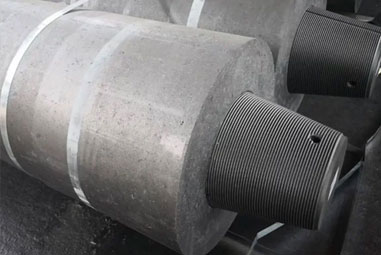
A graphite electrode is a consumable used in electric steel making processes like the electric arc furnace (EAF) and laddle furnace.graphite electrode It conducts high current at low voltage to melt and alloy metals into a product or molten mass. Graphite is an excellent electrical conductor due to its hexagonal atomic structure that gives electrons freedom to migrate across its layers. This feature, coupled with the ability to withstand extreme temperatures, makes it an ideal material for the job. It is also cheap, robust and safe to handle. It is considered one of the most important refractory materials in the world, and it continues to be in high demand despite market fluctuations.
Electrode manufacturers use a variety of raw materials to produce graphite.graphite electrode Metallurgical coke and anthracite are usually the primary sources, but other options like nickel, copper or brass can be utilized. However, graphite remains the most popular choice for high-performance applications. It offers a wide range of benefits for both EAF and laddle applications.
Graphite’s chemical stability in an electrolyte is critical to the successful operation of the graphite electrode.graphite electrode In a recent study, a team of researchers used atomic force microscopy to monitor the chemical interaction between the graphite and an aqueous perchloric acid solution. They scanned the basal plane of highly oriented pyrolytic graphite under an open circuit potential of 1.0–0.8 V. They observed that the surface of the graphite disintegrates at a rate that depends on the potential applied.
At higher potentials, the graphite becomes atomically flat and forms a layer that is largely free of defects.graphite electrode At lower potentials, however, the layer becomes increasingly distorted and deformed. This deterioration is due to solvent co-intercalation of lithium ions that are solvated in the aqueous perchloric acid.
The researchers observed that this deterioration of the graphite surface leads to a significant loss of electrochemical stability, and the carbon in the basal plane begins to dissolve in perchloric acid. The resulting damage to the electrode surface can impact its performance in the field.
To counteract this problem, the team deposited porphyrin onto the graphite surface using an electrochemical approach. The porphyrin protected the graphite from further oxidation by blocking its access to oxygen molecules. The resulting film was found to be stable under a wide range of conditions, including high temperature and low pH.
In order to optimize the performance of an electrode, it is necessary to match its properties with the specific application. An electrode with minimal EDM requirements could be made from an inexpensive graphite material with larger particles and lower strengths. On the other hand, an electrode with critical features and stringent tolerances will require a premium graphite that is more expensive to manufacture.